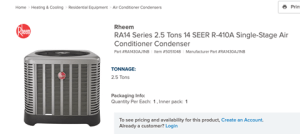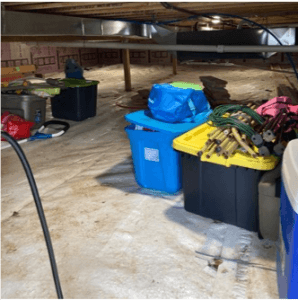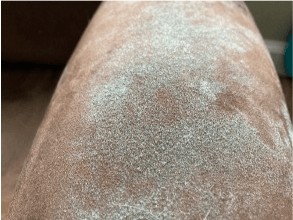I got a call yesterday from someone, we’ll call him “Bob”, who attended IDI’s regional insulation class in MN this year. It’s his first year in the insulation industry so he bought a spray foam rig, started learning building science, and is doing quite well. He called because he knows someone who: Moved into a new home, built with the help of a non-profit group, in the Midwest, occupied March 2020, and after 6 months, the’re having “biological growth” on the furniture due to excessive humidity in the house. The homeowner believes this is mold, but since it hasn’t been tested yet, we will stick with calling it “growth.”

Finding the Source of the Moisture Problem
Believing this was more of a building science issue, I asked about relative humidity levels in the home. “Bob”, let me know they measured it at 88%. As the conversation continued I was told that someone prescribed continuous fresh air to fix the problem and said to wire the bath fan to stay on 24 hours a day. This did not go well. The “solution” pulled VOC’s and cooking smoke out of the kitchen and down to the hall to the bath, while setting off smoke detectors and the fire alarm along the way. We will cover more on this fan later, because this a good time to add in that the home has a gas stove with no hood or vent to the outside.

Is the Air Conditioner Helping or Hurting the Situation?
When asked about the AC unit, Bob didn’t know the size, so he sent me a picture.

I went online, looked up the model number and realized we had a 1000 sq ft home with a 2.5 (two and a half) ton AC unit. Just to pull in some of the other facts, this is a home with good crawl space insulation,, R-60 blown-in fiberglass in the attic, Low E windows, and R-20 walls. This is a great building envelope. But… The mechanical is sized at 400 sq ft per ton. This is severely oversized and causes the AC to run only 3-5 minutes at a time during the hottest days of the year. Considering the AC unit or a dehumidifier are the only places water gets removed from the air in a structure, this is bad. This AC wasn’t running long enough to remove any moisture and the fan in the bathroom was doing its best to bring in hot moist air from outside. The day he was calling, that air was 98 degrees and 95% relative humidity. Everything inside this building was starting to soak up moisture like a sponge and beginning to rot.
More on the Crawlspace
Not to beat a dead horse, but it should be noted that the crawl space had a liner put down over coarse crushed gravel. Once the liner was in, contractors were in and out of the space and then the new occupants walked over it as they used the space for storage. Who wouldn’t? The biggest problem is that the damage done to the low-grade liner now provided big opportunities for moisture and soil gasses to get through. This only helped create the excessive humidity in the house.

So what’s the moral of the story and why should insulators care? For starters, the code is requiring buildings to be much tighter and insulators are who are most often responsible for the caulking and air sealing package. Anyone familiar with spray foam or airtight construction has already had someone ask them if these buildings are too tight. But this house was insulated with fiberglass, and yes, even fiberglass contractors are being told they are making homes too tight. The truth is, homes built right under today’s code, need a dehumidifier and fresh air brought in for the occupants. Ventilating dehumidifiers work great for this. However, in this case, these are not the main fix for what went wrong.

In many parts of the country, insulators are being blamed for doing a good job. Sounds odd right? It’s true. According to proper insulation and building science standards, the building envelope is to be sealed so air and moisture won’t be drawn in through building materials. Fresh air should come in where it can be conditioned and evenly distributed though the building. When air testing and blower door numbers come back on this home, I am betting that the insulator and the other building envelope trades did a fantastic job. The home does not have problems because of the envelope. The two major culprits here are that a bath fan is trying to pull unconditioned (humid) air into the home and the mechanical system is so large, it cools the home before any moisture is removed. The end result is kind of scary for the homeowner. They don’t know if they have a carbon monoxide or radon problem yet, but they do know the excessive humidity levels in the house are busy creating, what could be, lots of long-term damage.
The Moral of the Story? Get to Know the Building Owner
So back to that “moral of the story.” As insulators, the time has come where you need to know if the contractors and building owners you’re working with and that they have mechanical contractors, that actually use software to calculate loads when deciding the size of the HVAC equipment. This home is a perfect example of how really caring people came together with the best of intentions to build something, and got it wrong. I have spoken to countless insulators who face this type of problem. Most of the time, it’s when they are being blamed for buckling floors, water running off windows, and other moisture–related problems. Just remember next time you are bidding a job with a contractor you aren’t used to, a few questions up front can save a lot of headaches at the end.

At IDI, We Work For You
We want to be involved in your projects, and we have years of insulation experience and building science expertise to help you grow your business. If you’re experiencing insulation issues and can’t seem to identify the source, contact one of our experts for help. At IDI, we also offer regular hands-on trainings to help contractors gain access to industry insights that can assist with any project, whether it is residential or commercial. Reach out to IDI today and see what we can do for you.